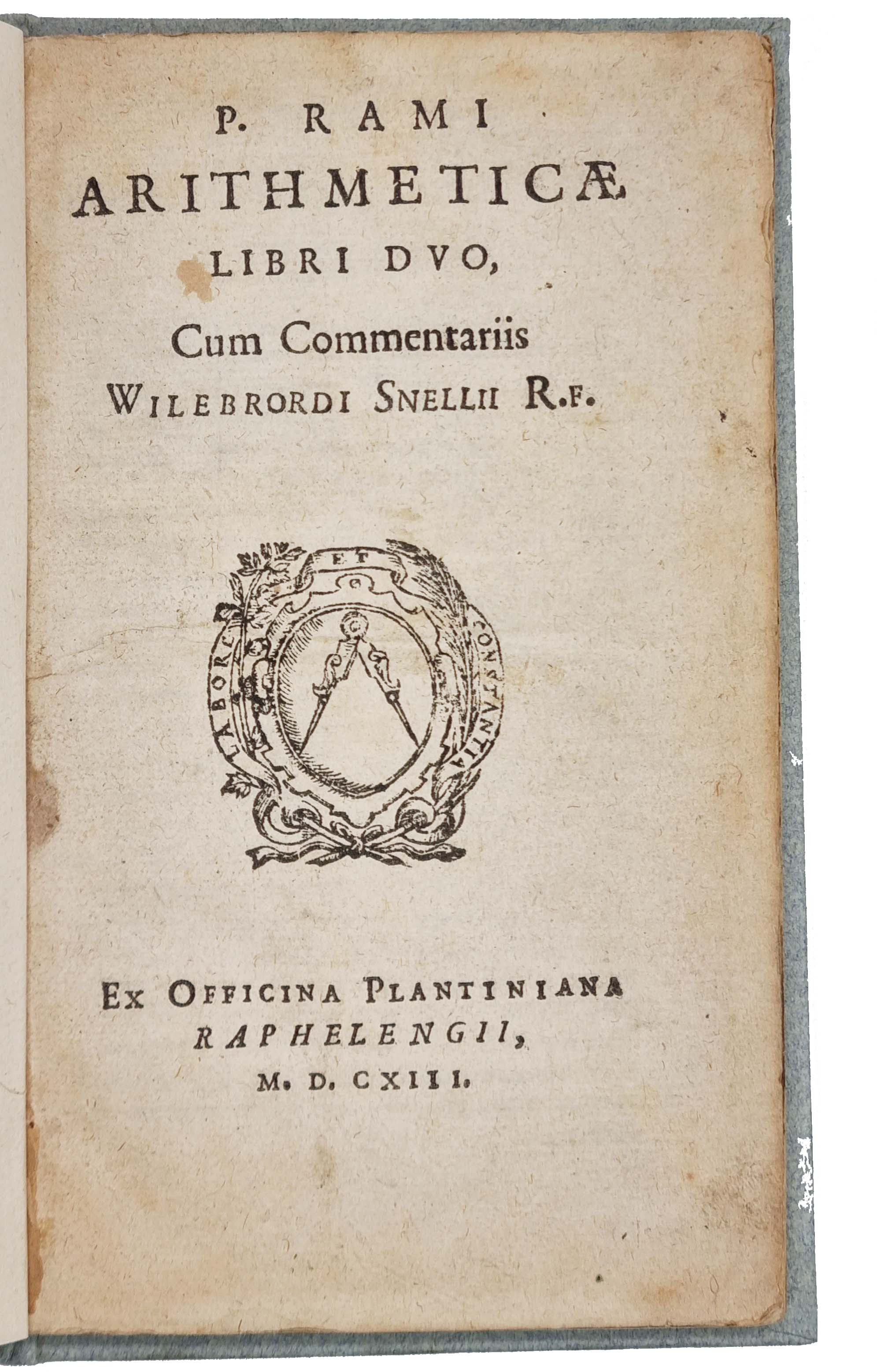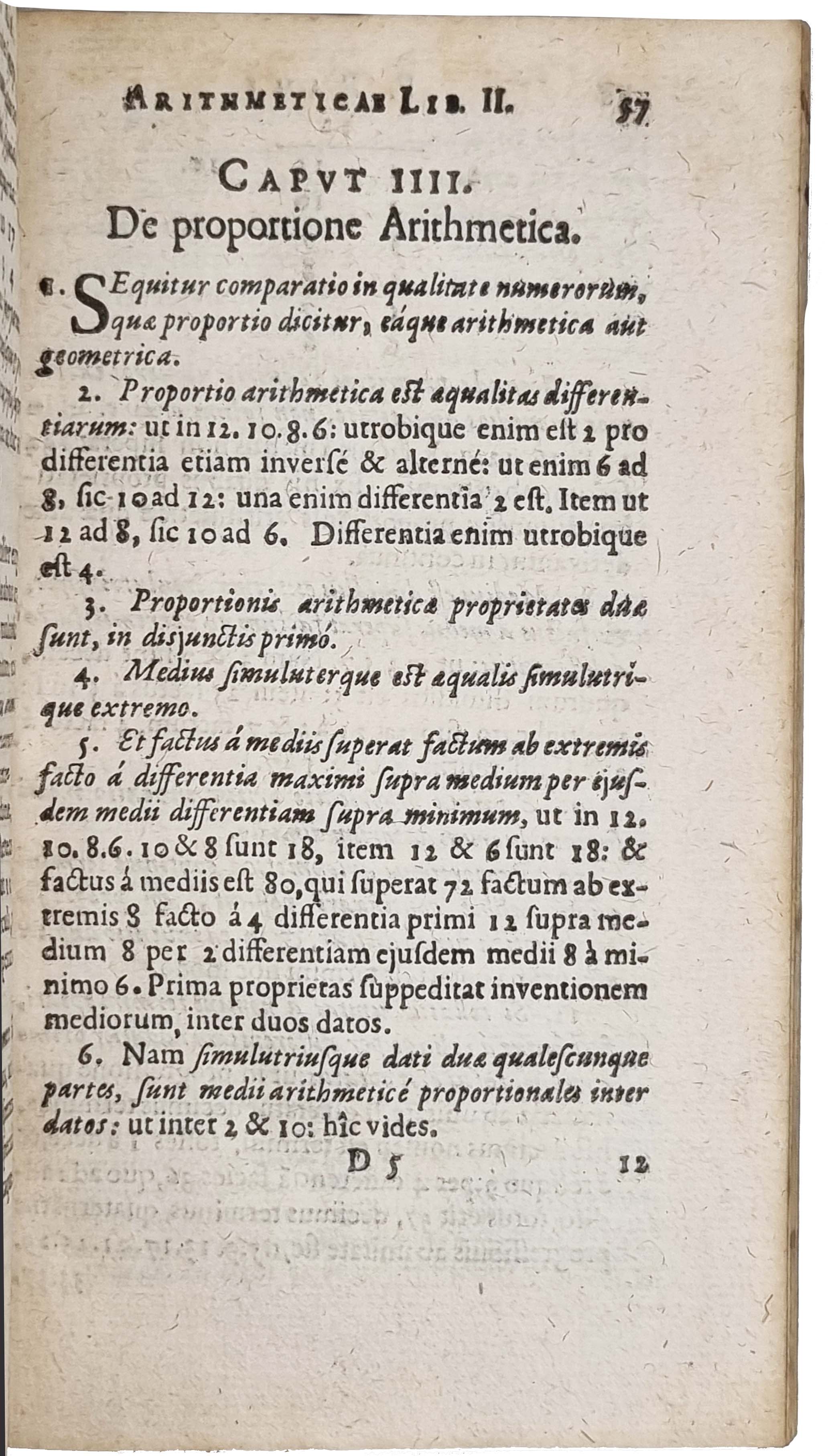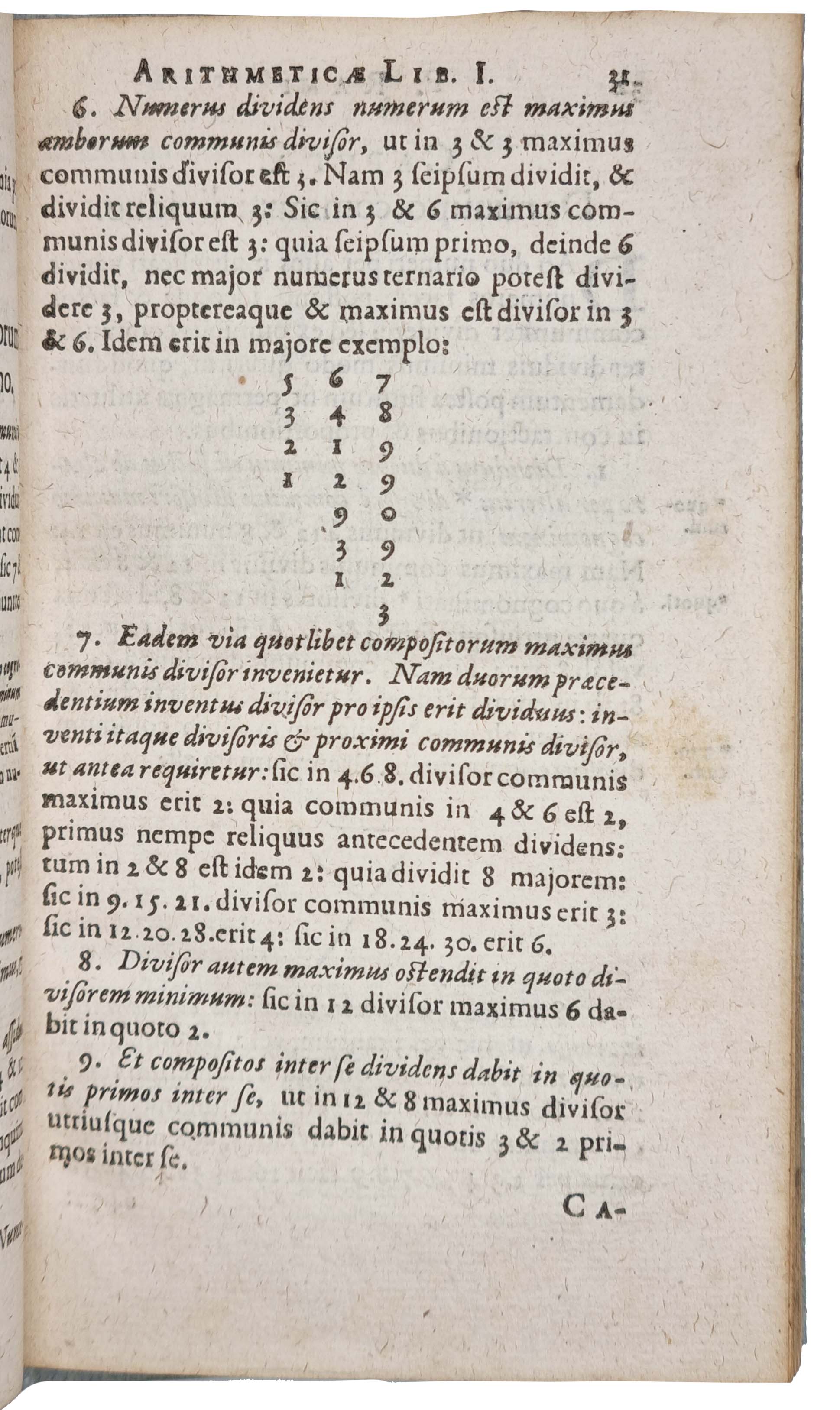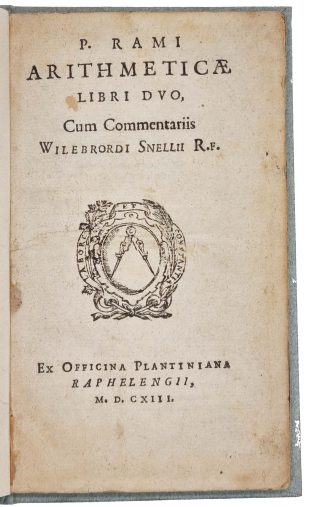RAMUS, Peter. SNEL, Willebrord
Arithmeticæ libri duo, cum commentariis Wilebrordi Snelli
Leiden, Officina Plantiniana Raphelengii, 1613£1,500.00
8vo. pp. [iv], 106; A-F8, last blank. Roman and italic letter. Plantin’s woodcut compass device on title, floriated woodcut initials, Erwin Tomash label on pastedown. Light age yellowing, minor marginal spotting in places. A good copy in modern grey paper boards.
First edition of Peter Ramus popular work on arithmetic for students with the commentary by the dutch mathematician Willebrord Snell. “Willebrord Snell, .. astronomer and mathematician who discovered the law of refraction, which relates the degree of the bending of light to the properties of the refractive material. This law is basic to modern geometrical optics. In 1613 he succeeded his father, Rudolph Snell (1546–1613), as professor of mathematics in the University of Leiden. His Eratosthenes Batavus (1617) contains the account of his method of measuring the Earth. The account of Snell’s law of refraction (1621) went unpublished, capturing attention only when the Dutch physicist Christiaan Huygens related Snell’s finding in Dioptrica (1703).” Enc. Brit. “This is a reprinting of the first part (the arithmetic, without the geometry) of Ramus’ 1569 publication, Arithmeticæ libri duo: Geometriæ septem et viginti … Snel was a proficient computer and improved the classical method of finding the value of π by use of polygons. Using his method, he was able to find π tο 35 places using a polygon of 230 sides rather than the 262 sides used earlier by Ceulen. Peter Ramus (Pierre de la Ramée) was primarily a teacher of mathematics who was a central figure in the early stages of the Scientific Revolution. He was born into a noble family that had lost its fortunes in war. When, at the age of twelve, he entered the University of Paris, he was obliged to work as a servant to a wealthy student. He graduated in 1536, defending a thesis on Aristotle, and was engaged as a teacher at the university. His teaching, however, was anti-establishment in nature, for he attacked Aristotle, particularly his logic, and defended a thesis in which the works of Aristotle (and particularly his contemporary followers) were brought into question. After he published these views in Aristotelicae animadversiones, he was forbidden by Francis I to teach and publish philosophy. Because of this ban, Ramus turned to the study and teaching of mathematics. He was reinstated in 1547 and thereafter managed to rise swiftly in French academic circles, due in part to the vacancies caused by the plague. He continued to have problems with the authorities because of his views and in 1562 left the Catholic Church and converted to Calvinism. He was killed as part of the St. Bartholomew’s Day Massacre, despite having explicit royal protection. There is some reason to believe his death was at the hands of assassins hired by his academic rivals. This book is part of Ramus’ campaign to improve the teaching of science and mathematics. He was of the opinion that science in general, and in particular mathematics, had lost its focus on practical needs. The teaching of the arithmetic of Boethius had concentrated attention on the properties of numbers to such an extent that practical arithmetic and geometric skills had been neglected” Erwin Tomash.
Not in USTC. Erwin Tomash R9 (this copy).In stock





